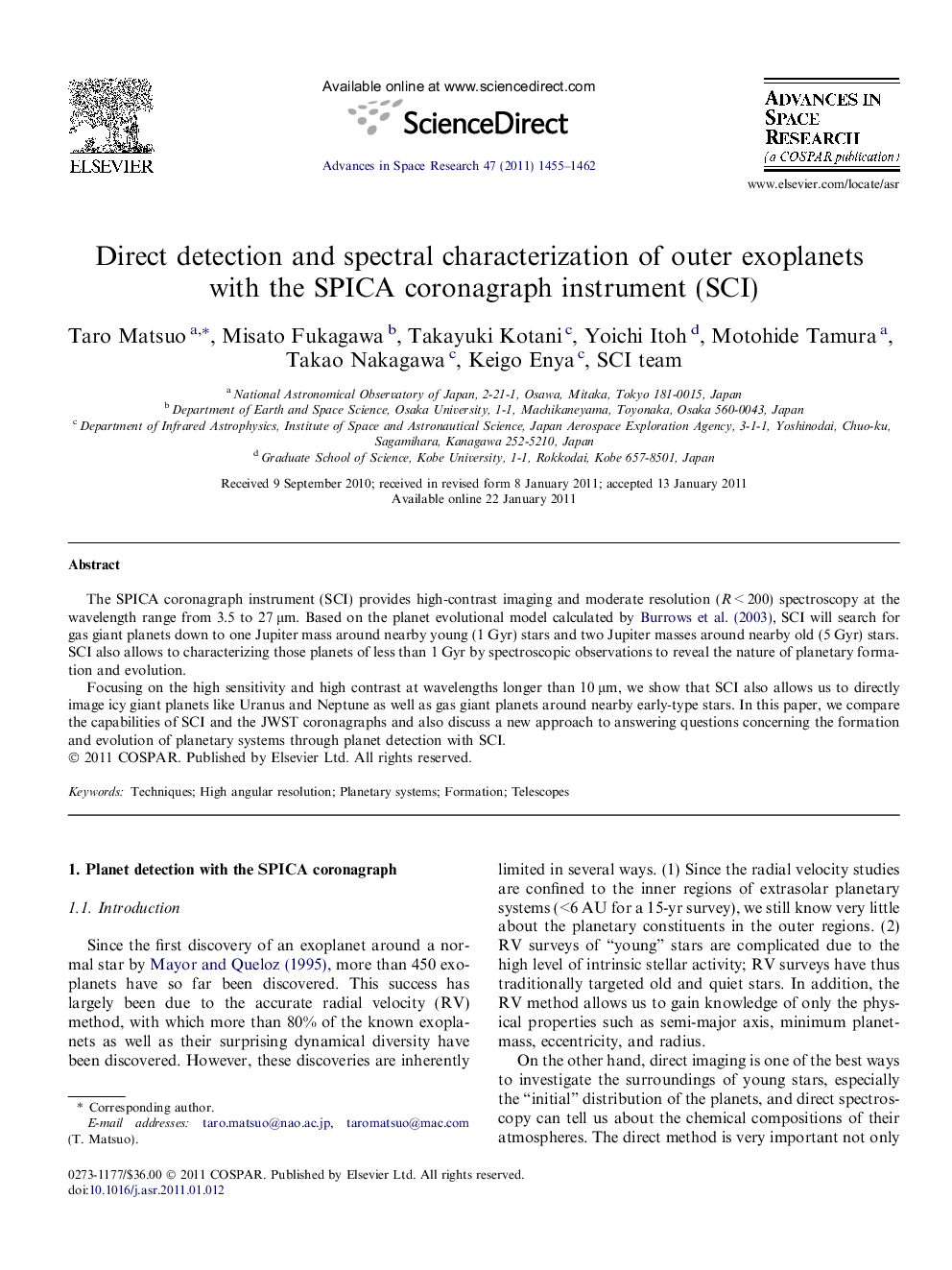| Article ID | Journal | Published Year | Pages | File Type |
|---|---|---|---|---|
| 1765716 | Advances in Space Research | 2011 | 8 Pages |
The SPICA coronagraph instrument (SCI) provides high-contrast imaging and moderate resolution (R < 200) spectroscopy at the wavelength range from 3.5 to 27 μm. Based on the planet evolutional model calculated by Burrows et al. (2003), SCI will search for gas giant planets down to one Jupiter mass around nearby young (1 Gyr) stars and two Jupiter masses around nearby old (5 Gyr) stars. SCI also allows to characterizing those planets of less than 1 Gyr by spectroscopic observations to reveal the nature of planetary formation and evolution.Focusing on the high sensitivity and high contrast at wavelengths longer than 10 μm, we show that SCI also allows us to directly image icy giant planets like Uranus and Neptune as well as gas giant planets around nearby early-type stars. In this paper, we compare the capabilities of SCI and the JWST coronagraphs and also discuss a new approach to answering questions concerning the formation and evolution of planetary systems through planet detection with SCI.
